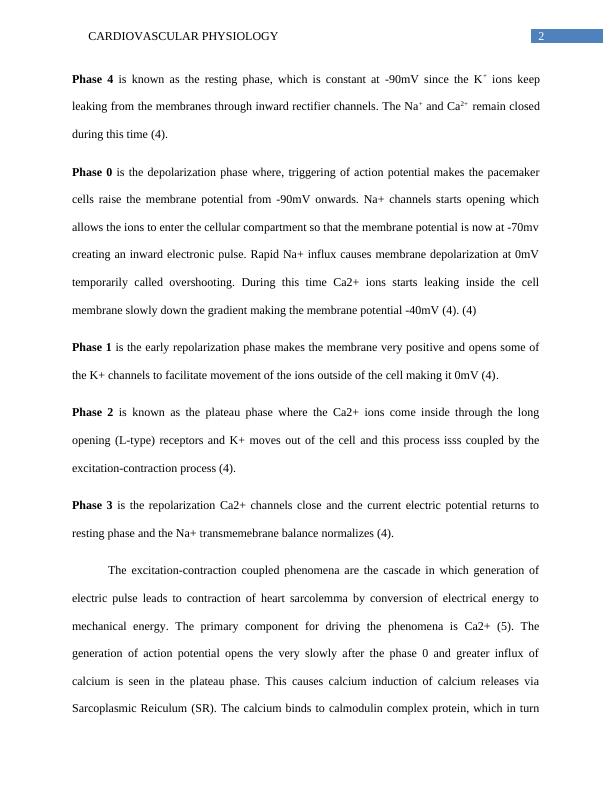Cardiovascular Physiology: Action Potential, Excitation-Contraction Coupling, and Inotropic Effects
Write a plan for an essay on the topic of cardiovascular pharmacology, using primary literature sources.
9 Pages1911 Words445 Views
Added on 2023-06-14
About This Document
This article discusses the action potential, excitation-contraction coupling, and inotropic effects in cardiovascular physiology. It covers the role of calcium ions, pacemaker potential, and contractile proteins in cardiac muscle contraction. The article also explores the factors that affect cardiac contractibility, including physiological and pharmaceutical effects.
Cardiovascular Physiology: Action Potential, Excitation-Contraction Coupling, and Inotropic Effects
Write a plan for an essay on the topic of cardiovascular pharmacology, using primary literature sources.
Added on 2023-06-14
ShareRelated Documents
End of preview
Want to access all the pages? Upload your documents or become a member.
Properties of Cardiac Muscle Discussion 2022
|7
|1403
|29
Heart Rate
|5
|636
|30
Heart Rate - Structure and Function
|1
|687
|88
Experimental Investigation of the Physiological Properties of Skeletal Muscle
|12
|1910
|115
Principles of Anatomy and Physiology Question Answer 2022
|10
|2410
|26
The name of the electrical network
|9
|1355
|19



